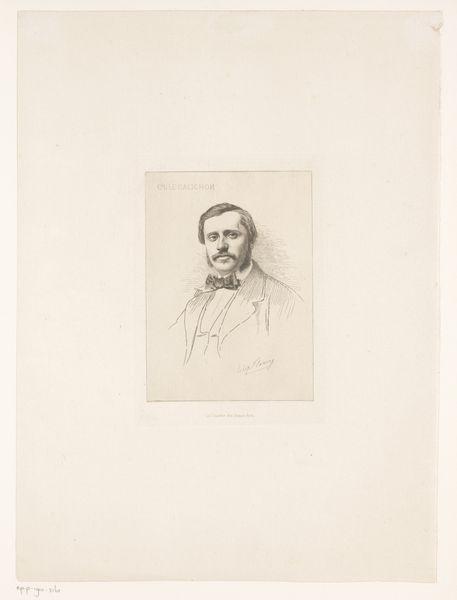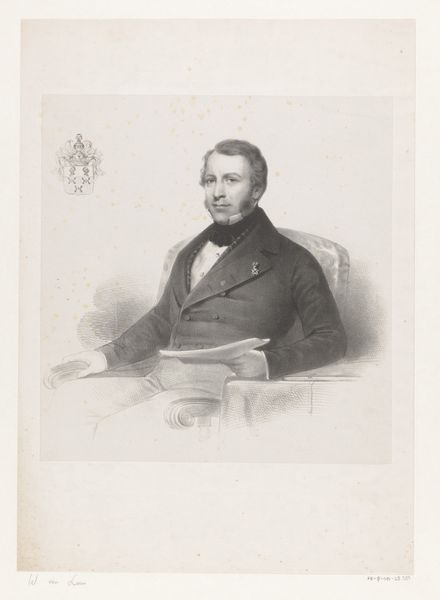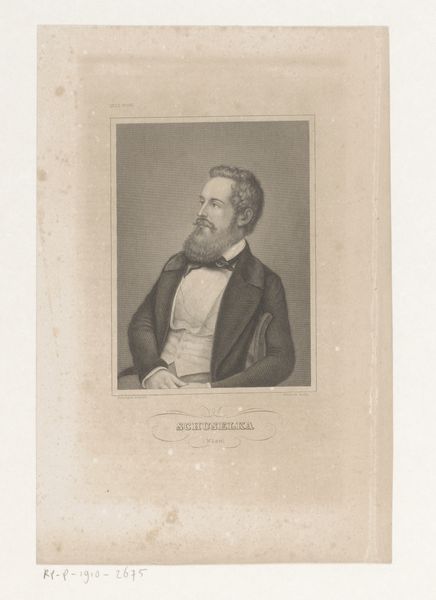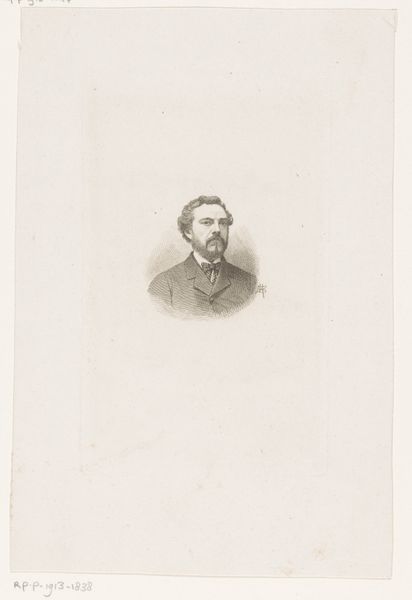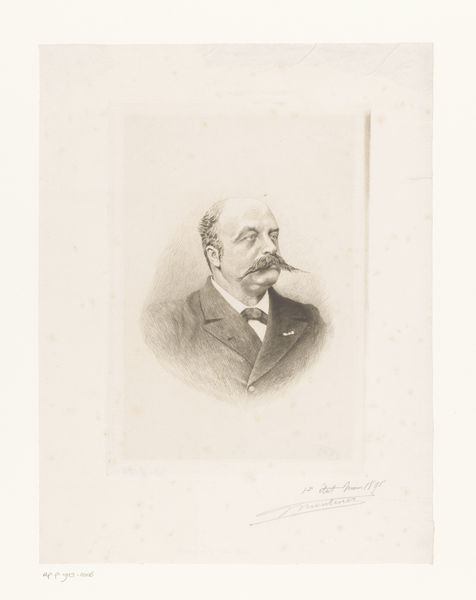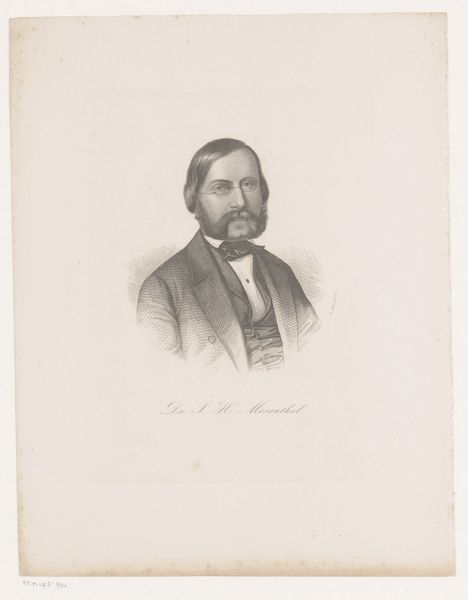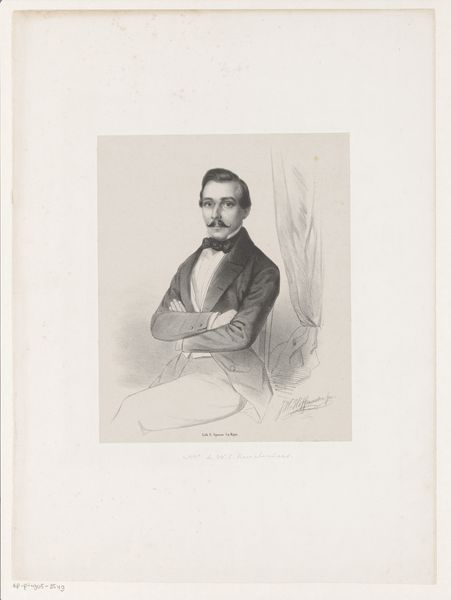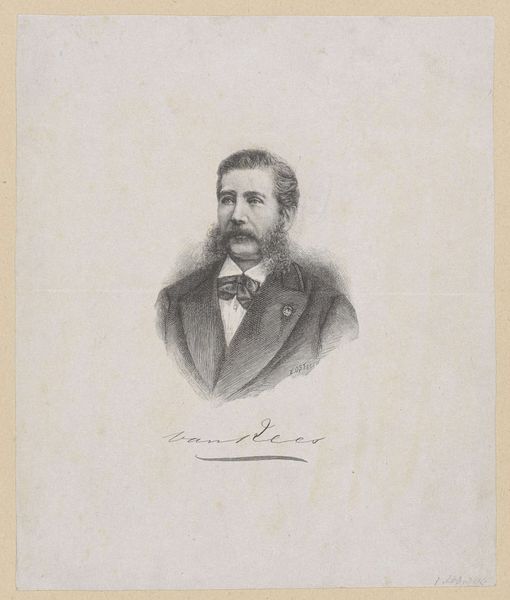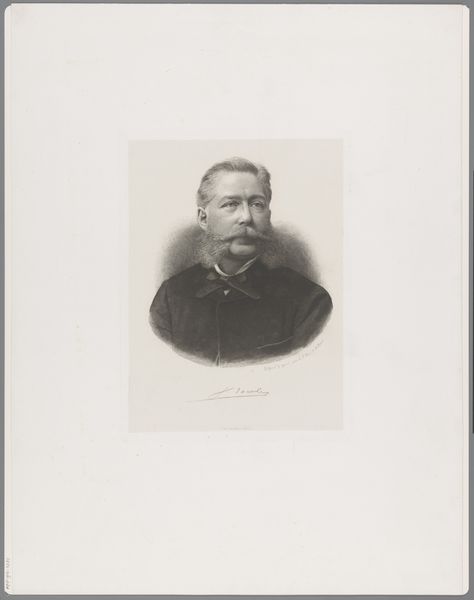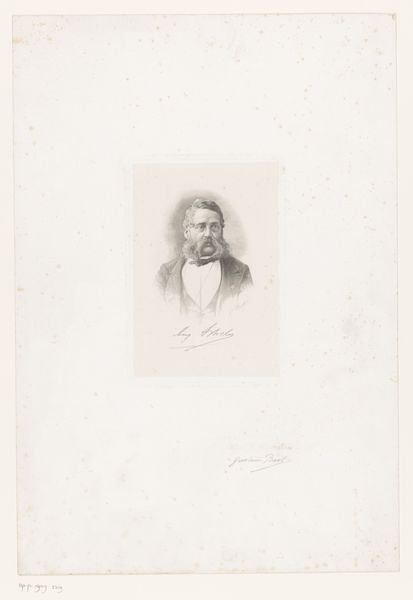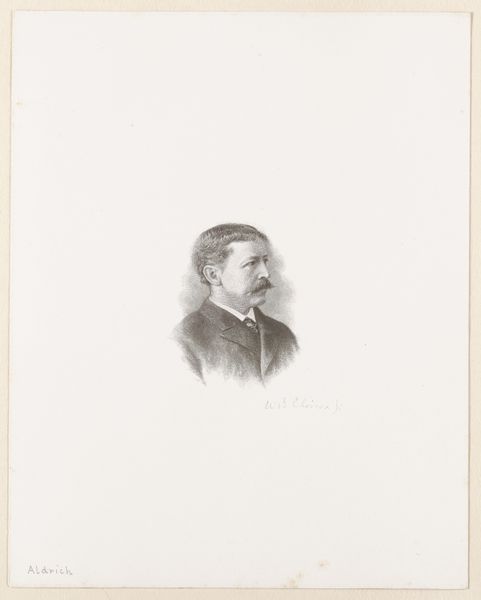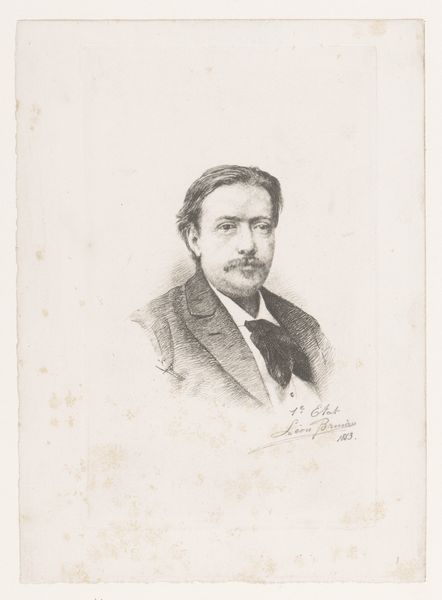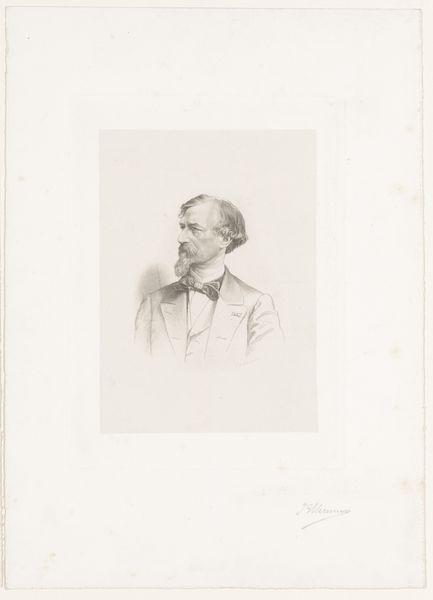
drawing, pencil
#
portrait
#
drawing
#
pencil drawing
#
pencil
#
academic-art
#
realism
Dimensions: height 145 mm, width 307 mm
Copyright: Rijks Museum: Open Domain
Editor: This drawing, "Portrait of a Man, possibly Drion," is attributed to Jean-Baptiste Meunier and was created sometime between 1831 and 1900 using pencil. It's a very direct, almost austere, depiction. What strikes you when you look at it? Curator: The gaze is what captivates me. Note how it establishes a link across time, connecting us directly to the sitter’s presence. But consider, what does it mean for a portrait to carry the *possibility* of identity, as in, “possibly Drion”? What kind of cultural anxieties are we seeing? Editor: Anxieties? I’m not sure I follow. Curator: Think about the rise of photography during this period. Traditional portraiture’s role as a record keeper was challenged. The “possibility” of identity speaks to this tension. How can a hand-drawn image compete with a photograph’s claim to truth? The symbolic weight shifts from mere representation to something more…evocative. Notice the precision in the face contrasted against the haziness in the jacket. Does this tell us about his position in society? Is that the bow tie he chose, or was it added for effect? What statement is being made? Editor: I see, the detail around the face and eyes could indicate that inner thought and character become more important than perfectly capturing likeness, as that was the photographer's job? And maybe, suggesting this man "could" be Drion leaves space for the viewer's imagination, filling in the blanks. Curator: Exactly! The symbolism is multifaceted, inviting us to contemplate not just who this man *was*, but who he *could be*. It challenges our very notions of portraiture and memory. The medium reinforces a sense of history. Editor: That’s fascinating! It really changes how I see it now. Curator: It’s a powerful example of how images hold cultural memories, and continue speaking to us across generations, isn't it?
Comments
No comments
Be the first to comment and join the conversation on the ultimate creative platform.

